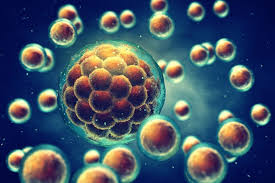
Breaking News
 BrightLearn - Revolutionizing Food: Grow Your Own Freedom...
BrightLearn - Revolutionizing Food: Grow Your Own Freedom...
 VIDEO: Alex Jones Goes Off On Trump, "The Globalists Have Been Deliberately Destroying...
VIDEO: Alex Jones Goes Off On Trump, "The Globalists Have Been Deliberately Destroying...
 Menopause and gut health: Decoding the relationship between hormones and digestive issues
Menopause and gut health: Decoding the relationship between hormones and digestive issues
Top Tech News
 Magnetic Fields Reshape the Movement of Sound Waves in a Stunning Discovery
Magnetic Fields Reshape the Movement of Sound Waves in a Stunning Discovery
 There are studies that have shown that there is a peptide that can completely regenerate nerves
There are studies that have shown that there is a peptide that can completely regenerate nerves
 Swedish startup unveils Starlink alternative - that Musk can't switch off
Swedish startup unveils Starlink alternative - that Musk can't switch off
 Video Games At 30,000 Feet? Starlink's Airline Rollout Is Making It Reality
Video Games At 30,000 Feet? Starlink's Airline Rollout Is Making It Reality
 Automating Pregnancy through Robot Surrogates
Automating Pregnancy through Robot Surrogates
 SpaceX launches Space Force's X-37B space plane on 8th mystery mission (video)
SpaceX launches Space Force's X-37B space plane on 8th mystery mission (video)
 This New Bionic Knee Is Changing the Game for Lower Leg Amputees
This New Bionic Knee Is Changing the Game for Lower Leg Amputees
 Grok 4 Vending Machine Win, Stealth Grok 4 coding Leading to Possible AGI with Grok 5
Grok 4 Vending Machine Win, Stealth Grok 4 coding Leading to Possible AGI with Grok 5
Regenerative drug summons stem cells for inflammation-free healing

The technique could be a boon for regenerative medicine to treat neurological disorders.
Inflammation is the body's natural response to injury and damage, swelling up to allow better blood flow to the area. It also acts like a "fire alarm" to attract the attention of the immune system to help the healing process, and stem cells are some of the most important responders.
In theory, inflammation could be used to lure these regenerative stem cells to injuries, but of course there are risks. Chronic inflammation underlies conditions like arthritis, multiple sclerosis and Crohn's disease, and has even been linked to cardiovascular diseases, Alzheimer's and depression.
So for the new study, the researchers investigated ways to summon stem cells using inflammation signals without creating further inflammation. The team modified an inflammatory molecule called CXCL12, which had previously been identified as a stem cell attractor. They found that it contains two "pockets" – one that binds to stem cells and one for inflammatory signaling – so they developed a drug that maximizes the binding but minimizes the signaling.
The end result is a drug they call SDV1a, which is designed to be injected almost anywhere in the body to lure stem cells there to begin healing an injury, without causing inflammation.

 Why Politicians Seek Power
Why Politicians Seek Power HERE COMES THE MOTHERSHIP
HERE COMES THE MOTHERSHIP Venus Aerospace Hypersonic Engine Breakthroughs
Venus Aerospace Hypersonic Engine Breakthroughs

